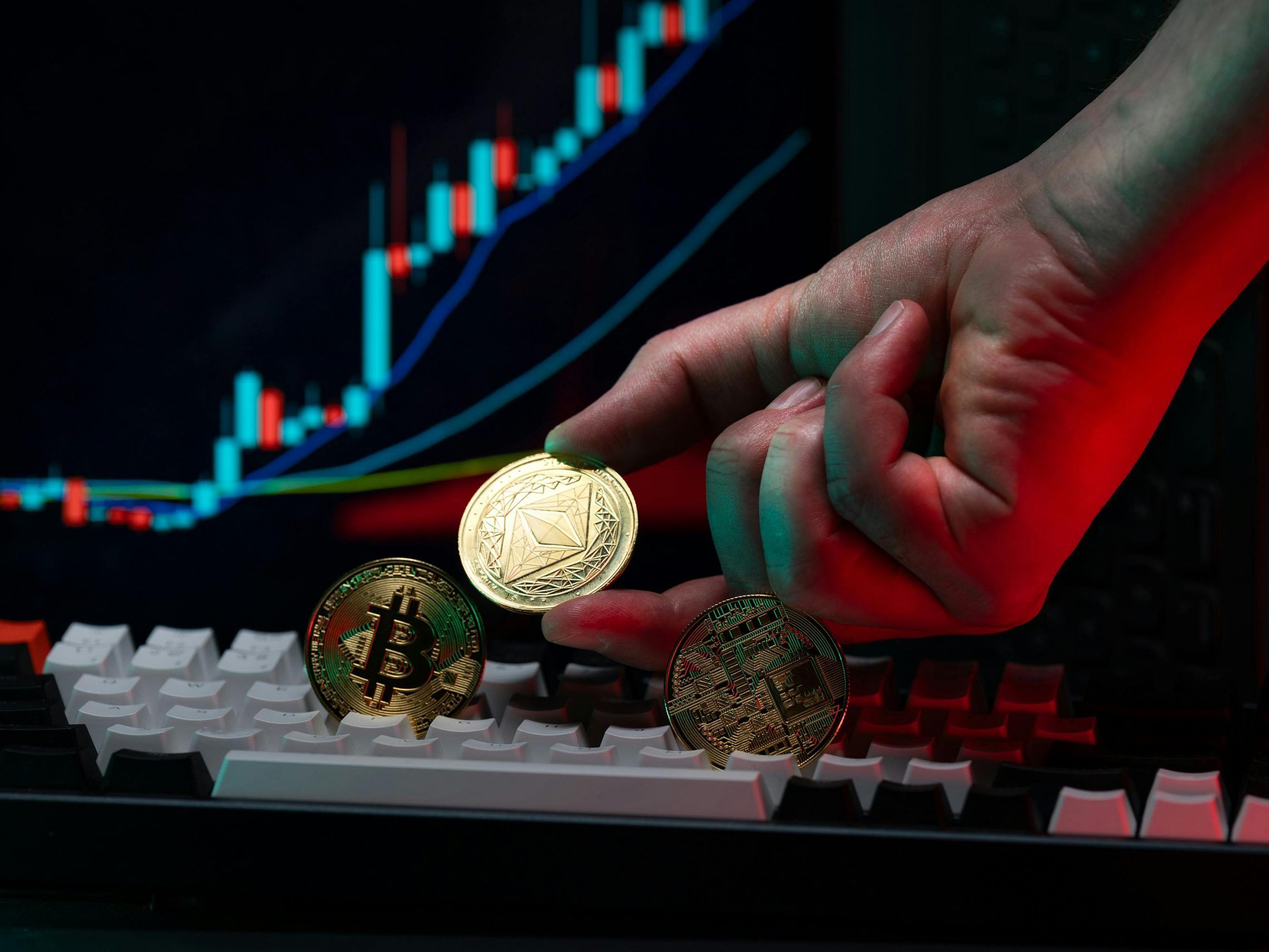Crypto Market in Transition: Ethereum as a Strategic Opportunity for Bold Investors?

Bitcoin has staged an unprecedented rally, with a price increase of nearly 700 percent since its bear market low in 2022. An investment of 5,000 euros back then would be worth 40,000 euros today – an impressive achievement. However, the history of the Bitcoin market shows patterns: After the halving in April 2024, we are approaching the typical 18-month rally phase before the bears could take over again. A hard correction with price losses of 70 percent or more would not be uncommon.
While Bitcoin continues to play an indispensable role as a store of value as "digital gold" and its dominance in the crypto space is undeniable, these historical cycles could be a signal to realize profits and prepare for the next phase of the market. The question is not whether Bitcoin retains its value, but whether the time is ripe to focus on growth opportunities in other segments.
Ethereum: The Catch-Up Player with Revolutionary Potential
Unlike Bitcoin, Ethereum (ETH) has not yet surpassed its all-time high of $4,867 from 2021, although it is approaching $4,300. This may seem disappointing at first glance, but it holds enormous catch-up potential. In the last cycle, ETH exceeded its previous high by around 240 percent. If similar growth were to repeat, Ethereum could rise well above $10,000, even under conservative assumptions.
Ethereum's appeal goes beyond mere price potential:
Technological Superiority: With the transition to Proof of Stake (PoS) in 2022, Ethereum has become more decentralized, faster, and more energy-efficient. This positions it as a more environmentally friendly and future-proof platform compared to Bitcoin's Proof-of-Work system. Staking returns also offer an additional incentive for investors.
Platform for Innovation: Ethereum is the backbone of thousands of decentralized applications (dApps) and smart contracts. It is the leading platform for DeFi, NFTs, and Web3 developments, underscoring its fundamental utility and adaptability. This broad application makes ETH an attractive partner for developers and companies and could drive its price upwards in the long term.
Institutional Discovery: After Bitcoin spot ETFs saw billion-dollar inflows in January 2024, Ethereum is catching up. In July 2025, Ethereum spot ETFs recorded inflows of around $5 billion, with some days seeing higher inflows than Bitcoin ETFs. Institutional investors are increasingly discovering the value and potential of Ethereum, which could lead to further demand surges.
Market Scarcity: On-chain data from CryptoQuant shows that the available ETH supply on major crypto exchanges has dropped to a historic low of around 15 percent of the circulating amount. This suggests that investors are holding their ETH holdings long-term and moving them from exchanges to private wallets. A scarce supply with rising demand is a classic price driver.
The Altcoin Season and the Broader Crypto Market: More Than Just Bitcoin and Ethereum
Most altcoins, including Ethereum, have not yet fully followed Bitcoin's recent price increase. However, this is often the prelude to an altcoin season. Historical patterns from 2017/2018 and 2020/2021 show that a strong Bitcoin phase is followed by parabolic growth in altcoins, where they significantly outperform Bitcoin. The market capitalization of the altcoin sector has so far "only" increased by 230 percent in the current cycle, far from the all-time high of 2021, signaling enormous potential for the upcoming phase.
Bitcoin's market dominance, which had risen from 39 to 66 percent, also shows signs of a trend reversal. Ethereum has already improved its value against Bitcoin from 7 to 13 percent. If the chart pattern of a "double bottom" (W-pattern) is confirmed, ETH could even reach 60 percent of Bitcoin's market capitalization.
The Crypto Market is Complex and Requires a Holistic View:
Diversification is Key: Besides the giants Bitcoin and Ethereum, there are thousands of altcoins with different use cases and risk profiles. A balanced diversification can spread risk and maximize the potential for high returns, but it also requires thorough research.
Macroeconomic Factors: Global interest rates, inflation, and regulatory developments have a significant impact on the entire crypto market. Keeping a watchful eye on these factors is essential to minimize risks and seize opportunities.
Conclusion: Strategic Investing in a Changing Market
While Bitcoin continues to form the foundation of many crypto portfolios, numerous indicators suggest that Ethereum and the broader altcoin market could be on the verge of significant performance. The untapped price potential of Ethereum, its technological strength, growing institutional interest, and decreasing availability make it a particularly attractive candidate.
The possibility of an upcoming altcoin season offers investors the chance to participate in the next wave of cryptocurrency growth. However, it is crucial to look beyond a mere BTC perspective, be aware of the dynamic market cycles, and pursue a well-informed, diversified investment strategy.
Questions and Answers about Crypto Investments:
What is an "Altcoin Season"?
An "Altcoin Season" is a market phase in the crypto sector where altcoins (all cryptocurrencies except Bitcoin) significantly outperform Bitcoin in terms of performance and often experience parabolic price increases. It typically follows a phase where Bitcoin has gained strongly.
Should I sell my Bitcoins to buy Ethereum?
The decision to sell Bitcoins to buy Ethereum depends on your personal risk tolerance and investment goals. Ethereum may currently offer higher growth potential due to its all-time high not yet being reached compared to Bitcoin and its technological advancements. However, many experts recommend diversification instead of focusing solely on one cryptocurrency to spread risks.
What are the general risks of crypto investments?
Crypto investments are highly volatile and carry significant risk. These include extreme price fluctuations, regulatory uncertainties, security risks (e.g., hacks of exchanges or wallets), the risk of total loss of invested capital, and influence by macroeconomic factors and market sentiment. Thorough research and investing only capital that one can afford to lose are essential.
This article has been automatically translated, read the original article here.





